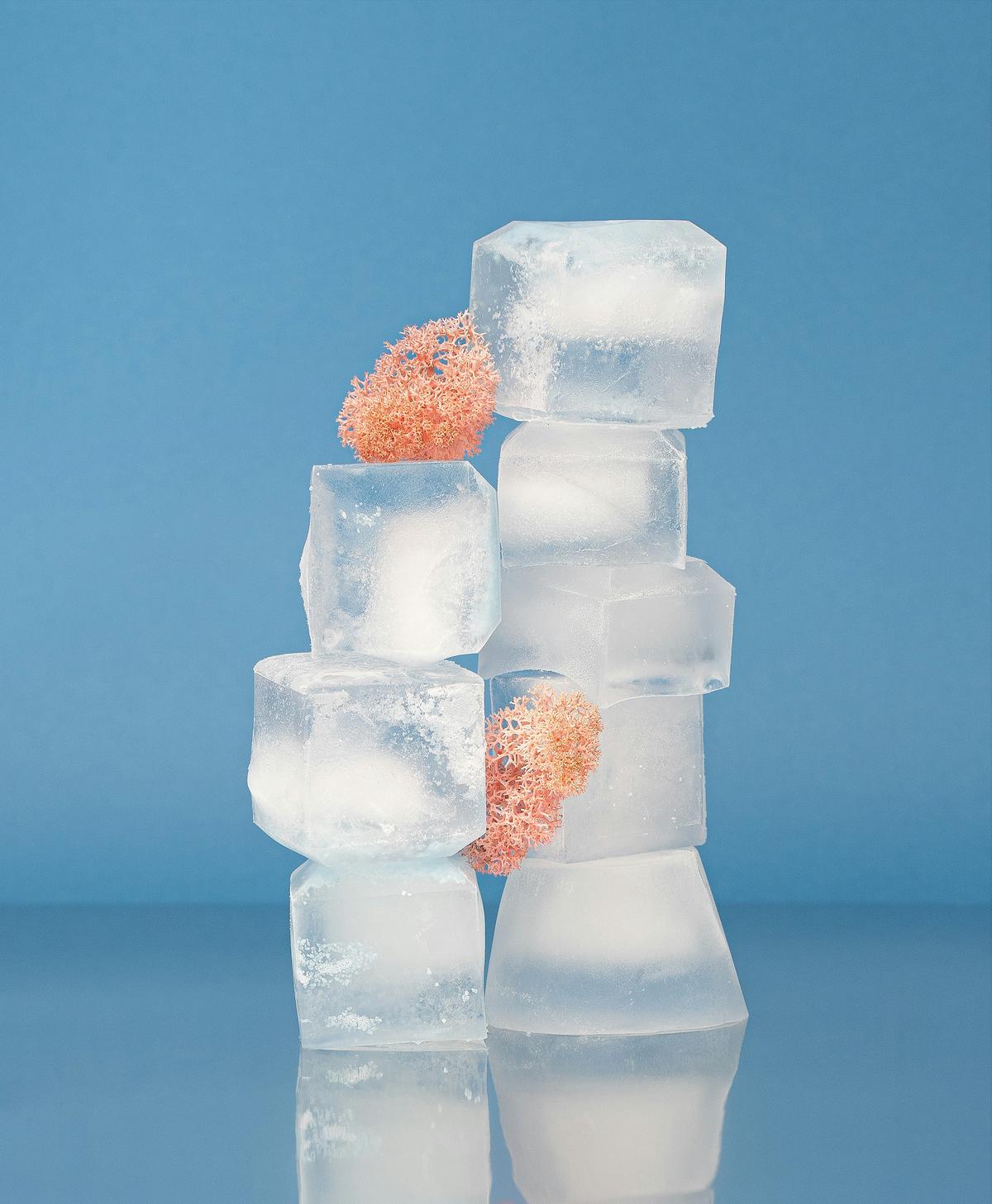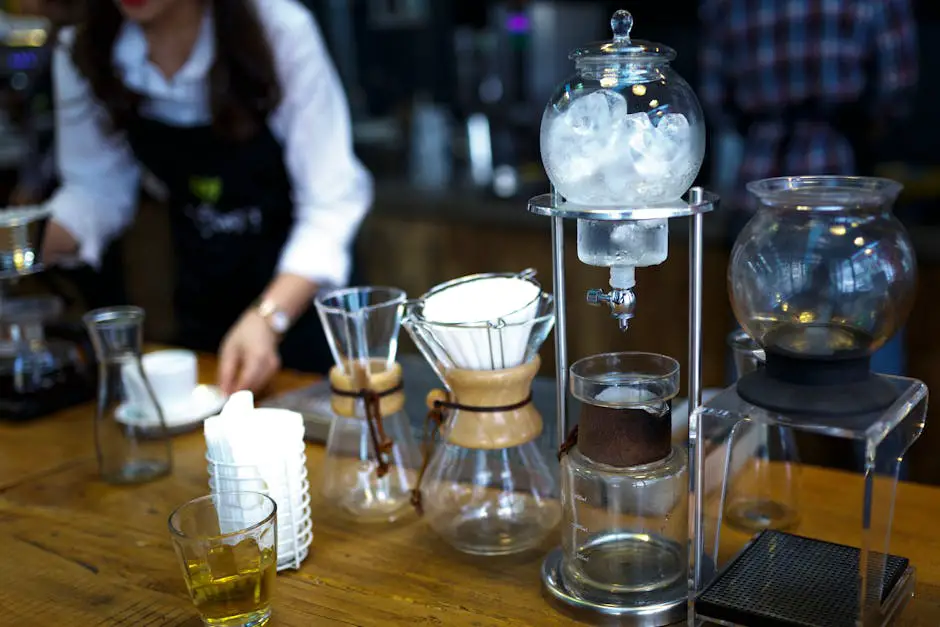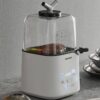Choosing Robust Ice Maker: Ultimate Guide
Choosing the right ice maker for your home or business is crucial in today’s busy world. With a wide variety of ice makers available, understanding the different types can help make your decision easier. This article aims to explore the various ice makers on the market, from compact portable models to heavy-duty commercial units, and everything in between. By considering key factors such as space, ice production needs, and preferences, finding the perfect ice maker to meet your needs can be straightforward.
Types of Ice Makers
Exploring the World of Ice Makers: Varieties Available in the Market
In today’s fast-paced world, having an ice maker at home or in a commercial setting doesn’t just offer convenience; it’s almost a necessity for many. Given the vast array of options available, selecting the right ice maker can feel like navigating through a maze. However, understanding the different varieties can simplify your decision. Let’s dive into the main types of ice makers you’ll find on the market.
-
- Portable Ice Makers: The Compact Choice
Ideal for personal use, portable ice makers are compact, require no permanent installation, and can easily move around. They’re perfect for small kitchens, RVs, boats, or any space where room is at a premium. Despite their size, portable models can surprisingly churn out a substantial amount of ice daily, typically ranging from 20 to 50 pounds. The one downside? They need to be manually filled with water.
-
- Undercounter Ice Makers: The Seamless Addition
Undercounter ice makers are designed to fit seamlessly into your kitchen layout, much like a built-in dishwasher. They’re larger than portable models and require a water line and drain, making their installation a bit more involved. However, their integration into your kitchen provides both a sophisticated look and a higher ice production capacity, usually up to 60 pounds of ice per day.
-
- Commercial Ice Makers: The Powerhouse Producers
Commercial ice makers are the go-to choice for businesses that require a significant amount of ice. These units are substantial in size and ice output, producing anywhere from 100 to 1000 pounds of ice within 24 hours. They come in various forms, including modular, undercounter, and countertop units, each designed to meet different commercial needs. Restaurants, bars, and hospitals typically rely on these powerhouse producers.
-
- Countertop Ice Makers: The Convenient Server
Countertop ice makers strike a balance between portability and functionality. They’re designed to fit on most countertops and are perfect for office break rooms or small businesses. These models can produce ice quickly, often within 10 minutes, and store a modest amount. While they don’t match the capacity of larger, undercounter models, their convenience makes them a popular choice.
-
- Specialty Ice Makers: For the Ice Connoisseur
Aside from the standard ice cube makers, the market also caters to those with specific ice preferences. These specialty ice makers produce nugget ice, clear ice, or even gourmet ice, tailored to elevate the drinking experience. Nugget ice, also known as sonic or pellet ice, is soft and chewable, making it a favorite for cocktails and soft drinks. Clear ice makers, on the other hand, produce crystal-clear cubes free of impurities and air bubbles, perfect for the discerning aficionado.
Choosing the right ice maker involves considering your space, the amount of ice you require, and the type of ice you prefer. Whether it’s the convenience of a portable unit, the integration of an undercounter model, the capacity of a commercial machine, the quick serving of a countertop version, or the unique offerings of specialty ice makers, there’s a solution out there to meet every ice-making need.

Key Features to Consider
Selecting the Best Ice Maker: Key Features to Consider
Diving deeper into the world of ice makers, whether for home entertainment or commercial purpose, demands attention to certain features beyond the basic categories of portable, undercounter, commercial, countertop, or specialty ice makers. Understanding the nuances of these features ensures you make the most appropriate choice for your needs.
Firstly, the type of ice produced is a paramount consideration. Ice makers don’t just churn out generic ice cubes; they offer a variety of shapes and sizes, from the standard cube to the sophisticated crescent, bullet-shape, nugget, or gourmet ice. The choice of ice type affects not only the aesthetic appeal of your beverages but also factors like the rate of dilution – nugget ice, for example, melts faster than larger, denser cubes.
Second, the production capacity of an ice maker is crucial. This is usually measured in pounds of ice per 24 hours. Your selection should align with your consumption needs. If you frequently host large gatherings or require a commercial unit, opting for a machine with a high output is essential. Conversely, for smaller households or occasional use, a less intensive production rate model would suffice and be more energy-efficient.
Another important feature is storage capacity. How much ice a machine can hold at any given time is as important as how much it can produce. If the storage bin is too small, you’ll find yourself constantly emptying the bin, which can be inconvenient. On the other hand, too large a bin without adequate usage can lead to stale ice.
Energy efficiency is another critical factor, especially in an era where energy costs are climbing. Ice makers with ENERGY STAR ratings ensure lower utility bills and contribute to a healthier environment by reducing your carbon footprint. They implement smart water and energy use strategies without compromising on performance.
Ease of installation and maintenance cannot be overlooked. Some ice makers require a permanent water line, which might necessitate professional installation, increasing the initial cost. Models that are easy to clean and service will ensure longevity and consistent performance, preventing the buildup of lime scale or mold.
Lastly, the noise level of the ice maker might influence your decision, particularly for residential use. Ice makers can range from whisper-quiet to notably loud. For environments where noise is a concern, seeking out a quieter machine is worthwhile to maintain a peaceful atmosphere.
Choosing the right ice maker transcends the basic understanding of different types. It involves a closer inspection of features that impact daily use, efficiency, and satisfaction. By considering the type of ice, production and storage capacities, energy efficiency, ease of installation and maintenance, and noise level, you can select an ice maker that meets your specific needs, ensuring a constant supply of fresh ice for every occasion.

Durability and Maintenance
When selecting an ice maker, durability and maintenance stand as critical aspects that significantly influence the buyer’s decision. Delving into these factors, we unpack the nuanced ways they determine the reliability, longevity, and overall user experience of owning an ice maker.
Durability manifests as a pivotal consideration, particularly in environments where the ice maker is expected to endure heavy usage. Commercial settings, for example, demand high-resilience machines capable of withstanding the rigor of constant operation while maintaining peak performance. Similarly, for residential users, a durable ice maker means fewer worries about breakdowns and replacements, translating to more value over the appliance’s lifespan. Materials like stainless steel not only lend an aesthetic appeal but also promise durability, resisting corrosion and wear. The build quality, including tightly sealed components and robust construction, further shields the machine from the wear and tear of daily use.
Meanwhile, maintenance unfolds as another cornerstone, shaping the user journey from installation through years of operation. Ice makers, irrespective of their placement and purpose, require regular upkeep to ensure hygienic ice production and efficient performance. A design that simplifies maintenance—be it through easily accessible cleaning points, self-cleaning functions, or straightforward user interfaces—enhances the ownership experience. For instance, models equipped with self-cleaning capabilities alleviate the burden of manual descaling and sanitation, ensuring the ice remains uncontaminated and safe for consumption with minimal effort.
The ease with which these tasks can be performed often dictates the frequency and efficacy of cleaning, directly impacting the machine’s longevity and the quality of ice produced. In the realm of commercial ice makers, where downtime equates to lost revenue, the ability to swiftly execute maintenance routines without specialized tools or professional help is particularly valued. Conversely, in a home setting, user-friendly maintenance not only prolongs the life of the device but also ensures it remains a convenient and cherished kitchen appliance, rather than a source of constant hassle.
The interplay between durability and maintenance not only influences the immediate usability and efficiency of an ice maker but also its long-term cost-effectiveness. A robustly built ice maker that demands minimal upkeep is more likely to outlast its counterparts, offering uninterrupted service over the years. On the flip side, high-maintenance or fragile models may incur additional costs in repairs, replacements, and professional servicing, eroding their initial value proposition.
In conclusion, when pondering over the purchase of an ice maker, potential buyers should weigh the aspects of durability and maintenance with keen attention. These factors are integral to ensuring the chosen ice maker meets the expected performance standards, remains cost-effective over its operational life, and aligns with the user’s lifestyle or business needs. Whether it’s for a bustling restaurant kitchen, a corporate break room, or a home bar, selecting an ice maker that stands the test of time and usage, all the while being easy to maintain, is crucial for a satisfactory and hassle-free ice-making experience.

Cost and Brand Comparisons
When diving into the world of ice makers, one cannot overlook the pivotal aspect of cost implications and how different brands stack up against each other in this regard. The landscape of ice maker brands is vast, with each brand offering unique features that cater to various needs, preferences, and budgets. In this post, we’ll dissect the financial perspective of choosing an ice maker, highlighting how you can navigate through the price tags without compromising on quality or specific requirements.
The price spectrum of ice makers is broad, influenced heavily by the type, capacity, and advanced features they offer. For instance, portable ice makers, known for their convenience and compact design, are generally the most budget-friendly options. Brands like Igloo and Magic Chef offer models that might not break the bank, providing basic ice-making capabilities suitable for occasional use or small gatherings. On the other end of the spectrum, undercounter and commercial ice makers demand a higher investment, attributed to their larger size, higher production and storage capacities, and durability for rigorous use. Brands such as Scotsman and Hoshizaki are synonymous with these high-end models, designed for those who require a constant and large supply of ice.
However, the initial purchase cost is just the tip of the iceberg. When assessing the financial implications of owning an ice maker, it’s crucial to consider the operational costs, which include energy consumption and maintenance expenses. Energy-efficient models, while perhaps more costly upfront, can lead to significant savings on utility bills in the long run. Brands like U-Line and Energy Star-rated models stand out for their commitment to energy efficiency.
Maintenance costs are another critical factor to keep in mind. Durability plays a central role here, as more robust models may demand fewer repairs over their lifespan. Additionally, ice makers that are designed with ease of maintenance in mind can further curtail long-term expenses. Look for brands that emphasize simplicity in cleaning and upkeep to ensure that maintenance doesn’t become a financial burden down the line.
In comparing different brands, customer service and warranty offerings are elements that shouldn’t be overlooked. Brands that provide extensive warranty periods and responsive customer support can offer added value, potentially reducing costs associated with repairs or replacements.
When sifting through your options, it’s beneficial to read customer reviews and comparisons to gauge the performance and reliability of different brands. Real-world experiences can shed light on how ice makers hold up over time, both in terms of functionality and cost-efficiency.
In conclusion, navigating the cost implications of purchasing an ice maker and comparing different brands requires a multifaceted approach. Looking beyond the sticker price to consider energy efficiency, durability, maintenance needs, and brand reputation can help in selecting an ice maker that not only meets your ice production needs but also aligns with your financial considerations. Whether you’re leaning towards a more affordable portable model or investing in a high-capacity commercial unit, understanding the full spectrum of costs involved is key to making an informed decision that ensures satisfaction and value over the long haul.

Innovations in Ice Maker Technology
Smart Connectivity Enhancements in Ice Makers
In today’s fast-paced world, innovations in ice maker technology have taken a giant leap forward with the introduction of smart connectivity features. This evolution marks a significant shift in how consumers interact with their devices, offering convenience and efficiency that were unimaginable just a few years ago.
One of the standout advancements in this area is the integration of Wi-Fi and Bluetooth capabilities into ice makers. This enhancement allows users to control and monitor their ice makers remotely using their smartphones or tablets. Through dedicated apps, homeowners can now configure settings, check ice production levels, and receive alerts about the status of their ice makers without needing to be physically present. This feature is particularly handy for those hosting events where ice consumption is high, ensuring a steady supply without constant manual checking.
Additionally, smart ice makers now come with voice command capabilities, thanks to compatibility with virtual assistants like Amazon Alexa and Google Assistant. Users can simply issue voice commands to start or stop ice production or inquire about the current status. This hands-free operation is not only convenient but also adds a touch of modernity to kitchen appliances.
Another innovative feature is the diagnostic and maintenance reminders facilitated by smart technology. Ice makers can now send notifications about necessary maintenance tasks, such as filter changes or cleaning cycles, directly to the user’s smartphone. This proactive approach helps maintain the machine’s efficiency and longevity, ensuring the quality of ice remains high.
The use of smart technologies also extends to energy management. Many of these advanced ice makers are equipped with algorithms that optimize ice production schedules based on usage patterns. For instance, the machine can learn to produce more ice during peak times while conserving energy during off-peak hours. This intelligent scheduling not only ensures there’s always enough ice but also reduces energy consumption, aligning with the growing consumer demand for eco-friendly appliances.
In the landscape of commercial applications, smart connectivity in ice makers offers even more significant benefits. Restaurant and bar owners can monitor multiple units across different locations, track ice consumption trends, and manage maintenance schedules efficiently, all from a centralized app. This level of control and oversight can lead to operational efficiencies and cost savings, proving invaluable in the competitive food service industry.
As we look towards the future, it’s evident that the integration of smart technologies in ice maker design is only the beginning. The potential for further innovation, such as predictive analytics for inventory management or integration with other smart home devices for seamless operation, is vast. With each advancement, ice makers are becoming not just appliances but essential tools for modern living, catering to the needs and lifestyles of today’s consumers.
Selecting the ideal ice maker is an important decision that can impact your daily life or business operations. By considering the different types and features available, as well as how they match your specific needs, you can ensure a constant supply of ice for any occasion. Beyond just offering convenience, the right ice maker can enhance your day-to-day operations, making it an investment worth considering. With the insights provided in this article, you’re now equipped to choose an ice maker that not only meets your demands but also exceeds your expectations, serving you efficiently for years to come.














